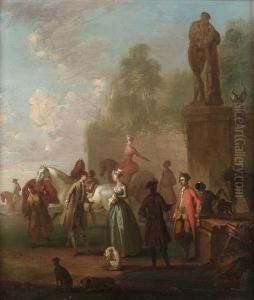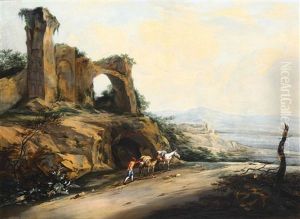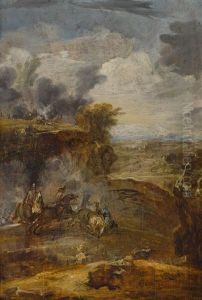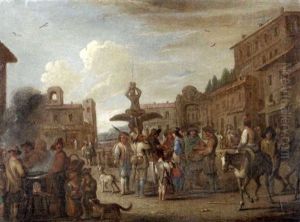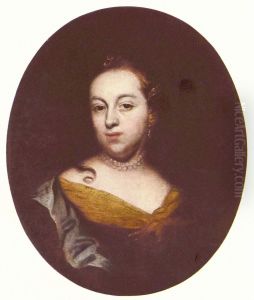Wenzel Lorenz Reiner Paintings
Wenzel Lorenz Reiner was a prominent figure in the Baroque art movement, born in 1689 in Bohemia, which is part of the modern-day Czech Republic. His artistic journey began in his homeland, but his talent soon propelled him beyond its borders. Reiner's works are characterized by their dynamic composition, vivid detail, and the dramatic use of light and shadow, all hallmarks of the Baroque style that sought to evoke emotion and bring religious themes to life in a tangible and powerful way.
Reiner's education and early career were deeply rooted in the rich artistic traditions of Central Europe. He ventured to Italy, as did many artists of his time, to study the Renaissance and early Baroque masters. This experience profoundly influenced his style and approach to painting. Upon returning to Bohemia, he brought with him the techniques and sensibilities he had absorbed in Italy, blending them with the local artistic traditions to create something unique and compelling.
Throughout his career, Reiner worked on numerous religious commissions, decorating churches and monasteries with his frescoes and altarpieces. His works were not only appreciated for their spiritual depth but also for their technical brilliance. Reiner had a knack for depicting biblical scenes and saints with a human touch, making the divine feel accessible and relatable. His contribution to the decoration of the Premonstratensian monastery at Teplá and the Cistercian monastery at Plasy are among his most celebrated works, showcasing his mastery over large-scale compositions and his ability to weave narrative, emotion, and spirituality into his art.
Reiner's influence extended beyond the confines of ecclesiastical art; he was also a sought-after portraitist among the nobility. His portraits are noted for their sophistication, detail, and the ability to capture the personality and stature of his subjects. Despite his success and influence, Reiner's life was not without challenges. The historical records suggest that he navigated the complexities of patronage and the artistic trends of his time with a degree of pragmatism, adapting his style to suit the tastes and demands of his clients while never compromising on the depth and integrity of his work.
Wenzel Lorenz Reiner passed away in 1743, leaving behind a legacy that has cemented his place among the notable artists of the Baroque period. His work continues to be studied and admired for its beauty, emotional depth, and technical prowess. Reiner's contribution to the arts not only enriched the cultural heritage of Bohemia but also contributed to the broader tapestry of European art history.
